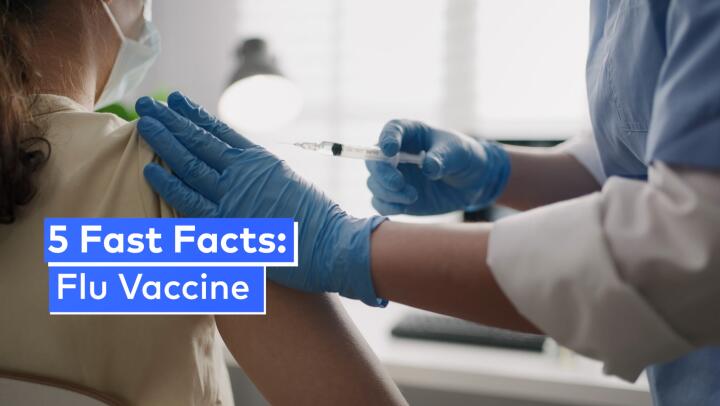What is the common cold?
A cold, often called the common cold, is an extremely widespread upper respiratory infection. Colds are caused by a viral infection of the upper respiratory tract, including the nose and throat. There are about 200 different types of viruses than can cause a cold. The common cold is one of the most common illnesses. If you have a cold, you’re not alone. Each year, there are more than a billion cases of the common cold in the United States, according to the National Institutes of Health (Source:
The effects of a cold can vary between individuals and the specific type of virus causing the infection. Typical symptoms of a cold include sneezing, coughing, sore throat, fatigue, and runny or stuffy nose. Colds are very contagious. They can occur at any time of year but are most common during the winter, especially during damp, rainy weather.
You can get a cold by inhaling a cold virus, such as when someone who has a cold sneezes nearby. You can also get a cold by touching your eyes, nose or mouth after you have touched a surface that is contaminated with a cold virus.
There is no cure for the common cold, but you can find relief by getting plenty of rest, drinking fluids, using over-the-counter cough drops, or taking over-the-counter cold medicines. In most cases, a cold is a mild, self-limiting disease that resolves by itself over a week or two. Antibiotics do not cure colds and do not shorten their course, so they should not be used for common cold. Most people in good health can recover from the common cold without complications.
In some cases, the common cold can lead to more serious infections and complications, such as pneumonia, acute bronchitis, and a worsening of asthma. People at risk for complications include those who have a chronic disease, an immunodeficiency disorder, a suppressed or compromised immune system, and the very young and very old.
Seek prompt medical care if you have a chronic disease and develop symptoms of a cold or if you have a cold that is not getting better. Seek immediate medical care (Call 911) if you, or someone you are with, have symptoms of a cold accompanied by shortness of breath, wheezing, chest pain, or a change in alertness or consciousness.
What are the symptoms of the common cold?
Symptoms of the common cold are generally mild and appear two to three days after exposure to a cold virus. Symptoms can vary depending on the specific type of virus causing the cold. Common cold symptoms include:
- Body aches
- Cough
- Fatigue
- Headache
- Low-grade fever
- Post-nasal drip
- Runny nose
- Sneezing
- Sore throat
- Stuffy nose or nasal congestion
- Watery eyes
Serious symptoms that might indicate a life-threatening condition
In some cases, a cold can result in serious complications, such as pneumonia or acute bronchitis. Call 911 or seek immediate medical care if you, or someone you are with, are experiencing any of the following symptoms:
- Change in alertness or level of consciousness
- Chest pain
- Deep, wet chest cough that produces yellow, green or brownish phlegm
- High fever (higher than 101 degrees Fahrenheit)
- Lethargy or unresponsiveness
- Shortness of breath
- Wheezing, a whistling sound made with breathing
What causes the common cold?
Colds are caused by viruses called rhinoviruses. There are about 200 different types of rhinoviruses that can cause the common cold. Despite popular belief, colds are not caused by being wet or cold, although in some cases these conditions may lower the body’s resistance to infection by rhinoviruses.
Colds are very contagious. Rhinoviruses that cause the common cold spread quickly from person to person when someone with the common cold talks, coughs or sneezes. This shoots droplets contaminated with the cold virus into the air where they can be breathed in by others.
You can also get the common cold by touching a person who has a cold, such as shaking hands, or touching a surface contaminated by a cold virus, such as a contaminated computer keyboard or doorknob. If you then touch your mouth, eyes or nose before washing your hands, you transmit the virus from your hands into your body.
Is it a cold or the flu?
With the first signs of a cold you may wonder if you caught a cold or the flu. Symptoms of a cold and the flu can be similar. So what’s the difference?
When you have a cold, the symptoms are generally mild and include runny nose, sneezing, nasal congestion, and possibly a low-grade fever below 101 degrees Fahrenheit.
When you have the flu, you may have the same symptoms, but you will probably experience more severe and uncomfortable symptoms. Flu symptoms include a high fever (higher than 101 degrees Fahrenheit), coughing, headache, body aches, extreme fatigue, and sore throat. In children, symptoms of the flu can also include abdominal pain and vomiting.
How is the common cold treated?
There is currently no cure for the common cold. Through treatment you can get relief from your symptoms to get the rest you need to keep up your strength and recover without developing complications.
Treatment of a cold includes:
- Acetaminophen (Tylenol) for fever, sore throat, and body aches
- Drinking extra fluids
- Getting extra rest and sleep
- Over-the-counter cold remedies
Currently, the general recommendation is that children under the age of six not use cold or cough medications because of the risk of serious side effects. In addition, people with a cold should not use aspirin or products that contain aspirin because of the risk of developing a rare but life-threatening condition called Reye syndrome. Reye syndrome has been linked to taking aspirin during a viral illness, such as a cold or flu.
Antibiotics are not prescribed for colds because they are ineffective against the viruses that cause colds. However, antibiotics may be prescribed if a person develops a secondary bacterial infection as a complication of the common cold, such as bacterial pneumonia or acute bronchitis. In rare cases, antiviral drugs may be prescribed for a cold.
Complementary and traditional treatments
Complementary and traditional treatments will not cure a cold but may help to minimize symptoms, increase comfort, and promote rest. Treatments include:
- Supplements or products that contain vitamin C or echinacea
- Chicken soup can help to break up congestion and provides easy-to-digest nutrients and extra fluids to keep up strength.
- Using mentholated ointments on the chest
- Using a cool-mist vaporizer
In some people, the common cold can break down the body’s defenses and lead to more serious infections. Complications of cold can be serious, even life threatening, in some cases. People most at risk for complications include:
- Infants and toddlers
- Older adults
- People who have a chronic disease, such as asthma, COPD, diabetes, or heart disease
- People who have compromised immune systems due to such conditions as HIV/AIDS, diabetes, cancer or cancer treatment, or kidney disease
Complications of a cold include:
- Pneumonia
- Acute bronchitis
- Otitis media
- Sinusitis
- Worsening of asthma
What are the risk factors for catching the common cold?
Colds can occur in any age group or population. A number of factors increase your risk of catching a cold, although not all people with risk factors will catch a cold. Risk factors for catching a cold or for developing complications of a cold include:
- Being an infant, toddler or older adult
- Being exposed to a person with a cold
- Being malnourished
- Frequently touching the eyes, nose or mouth, especially without washing your hands
- Having a chronic disease, such as asthma, COPD, diabetes, or heart disease
- Having a compromised immune system due to such conditions as an immunodeficiency disorder, HIV/AIDS, cancer or cancer treatment, or kidney disease
- Not getting enough rest
- Not washing hands after contact with a person who has a cold
- Not washing hands frequently, especially after touching surfaces that are often contaminated with cold viruses, such as doorknobs, computer keyboards and telephones
Reducing your risk of a cold
You can lower your risk of catching or spreading a cold by :
- Avoiding contact with a person who has a cold
- Avoiding touching your eyes, nose and mouth, which can transmit a cold virus from your hands into your body
- Covering your mouth and nose with your elbow (not the hand) or a tissue when sneezing or coughing
- Eating a well-balanced diet that includes a sufficient amount of fruits and vegetables
- Getting enough rest
- Using appropriate antibacterial cleaners to clean hands and surfaces
- Washing hands frequently during and after contact with a person who has a cold
- Washing hands frequently with soap and water for at least 15 seconds













